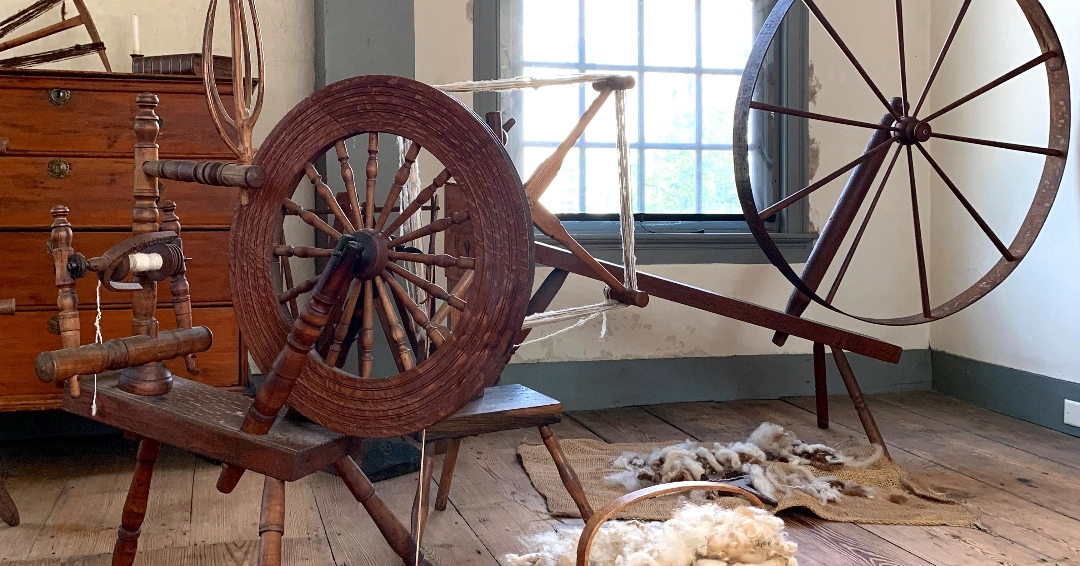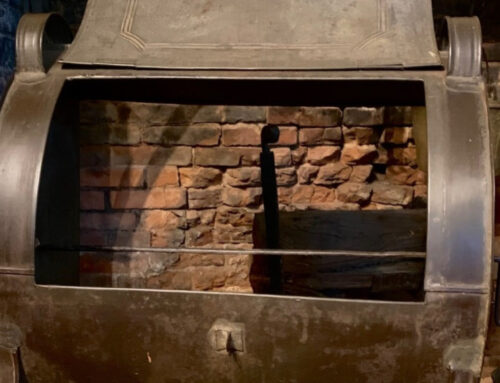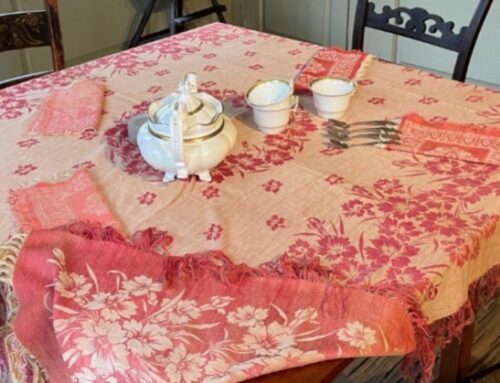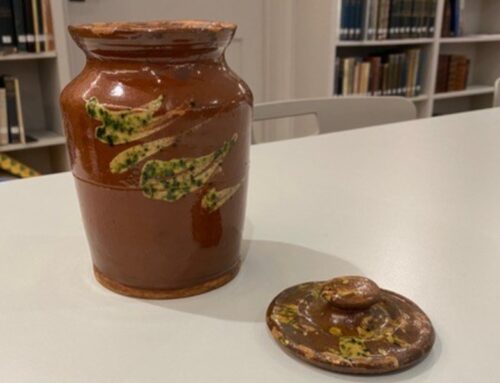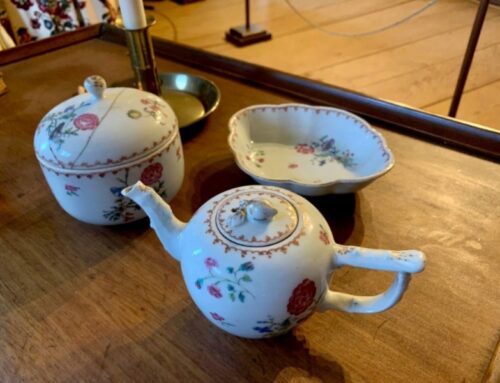In the 1700s and early 1800s, textiles in New England included domestically produced wool and linen, as well as imported silk and cotton. Wool (from sheep) and linen (from flax) were produced as a cottage industry in Wethersfield where most housewives owned a spinning wheel and spun their own wool and linen thread. Spinning was done mostly in cold weather next to the warm fireplace. Many also owned a loom to weave thread into fabric (called homespun). People kept sheep, and most households grew flax.
As the photo shows, wooden textile tools were used by the women in the family to process wool and linen. The flax wheel in the foreground (also called “Saxony wheel”) was used to spin flax into linen thread, but also wool into thread or yarn. The larger wool wheel in the background was used to spin wool by walking back and forth, thus its other name is “walking wheel.” The raw sheep’s wool in the basket is ready to be carded before spinning (a pair of cards to comb the wool sit on the floor). Finally, a clock reel used to measure skeins of wool stands between the two spinning wheels.

